
It’s nearly May. Los Angeles welcomes home the masses of April festival-goers and superbloom-seekers, bushes are as alive with bees as they are with flowers, and said best by the late, great Walt Whitman, “the lilac with mastering odor holds me.” With a floral aroma that becomes even stronger in full sun, the lilac takes center stage in May. Its (often) purple blossoms are an icon of spring, reminding us of new life, love and possibility after a long winter. Madonna may be the Queen of Pop, but the lilac is the “Queen of Shrubs,” and we bow down to her enchanting fragrance and purple majesty.

AS SWEET AS LILAC WINE
Maybe it’s just us, but lilacs seem to fly under the radar when it comes to edible flowers. And we get it: it’s hard to believe something that smells that good can also be nourishing. Contrary to popular belief, we’re happy to share that we CAN, in fact, have it all. The floral taste of lilac is heavenly in infusions, like:
*If you soon find yourself running a speakeasy to sell your homemade lilac wine, just don’t forget to send us the invite for the grand opening.
From a baking perspective, you use a lilac-sugar mixture in shortbread cookies to create a floral yet buttery delicacy. Because the lilac’s color browns a bit during a bake (see here and swipe to see the purple lilac flowers bake brown), it’s best to keep them raw (or candied!) if you plan to celebrate their vibrant hue.
Note: Like its aroma, the taste of the raw lilac flower packs a punch. So when serving raw, blossoms are best served in small doses, like as a garnish to a cookie, cake or salad!
DOCTOR LILAC
Native to eastern Europe and parts of Asia, lilacs have held importance to those areas both mythically and medicinally. In European folk medicine, for instance, the lilac plant has been used to treat ailments such as joint and tooth pain, bronchial or gastrointestinal issues, and wounds. There’s crossover in Asian traditional medicine, where the lilac has served as treatment for bronchial issues and tooth pain. Additionally, there’s evidence that Lilac has been used as an anti-periodic, to prevent relapses with diseases like malaria.
As with most edible flowers and herbs, you won’t find yourself with a prescription for a lilac-based treatment at a modern western pharmacy… yet. That said, there are solid, science-backed studies that highlight two key characteristics of the flower:
- Lilac is an astringent. You may experience a dry mouth sensation when you eat too much raw lilac in one bite. The flower naturally extracts moisture, making it an asset for skincare and wound treatment.
- Also, we’ve talked about the POWER of this flower’s scent, right? The lilac’s “aromatic action” is naturally irritating to the body – but not all irritation is a bad thing! Think about the GI tract. To irritate is to provoke movement. So when it comes to constipation– the lilac can go ahead and irritate away.
A reminder: while we love to share our enthusiasm for medicinal plants, please note this research should not be considered legal medical advice.
A HARDY TEMPTRESS
The likely origin of the lilac in the United States is around 1750, when lilacs were planted on the Governor Wentworth Estate in New Hampshire. Fittingly, the lilac is now New Hampshire’s state flower, meant to represent the state’s “hardy disposition.” That said, the lilac’s symbolism dates back much farther than its colonial introduction in the States. In Greek mythology, there is the story of Pan, god of the fields and forest, who fell in love with a forest nymph Syringa. Tired of being chased by Pan (boy, bye!) Syringa transformed herself into a lilac shrub. Though her efforts may well be the world’s first example of ghosting, she wasn’t successful. Still obsessed, Pan constructed the “pan flute,” or “panpipe” from Syringa’s hollow stem. Highlighting the lilac’s magnetism is a pattern in mythology, as in Celtic lore, the smell of the lilac is said to have unearthly powers to intoxicate the, er, smeller. However, in Russian mythology the flower’s intentions are far less devious: a sprig of lilac held over a newborn baby is said to impart wisdom.
BE MY LITTLE SPOON?
While hollow, lilac wood is very hard and durable (like those New Hampshire-ites), which makes it a woodworker’s dream for small carvings like pens, spoons or hair accessories.

- Species: Syringa vulgaris (the common lilac)
- Family: Oleaceae (the olive family!)
- Native to: eastern Europe/temperate Asia
- What it digs: neutral or lime soil, loves the sun
- What else it might answer to: ‘Charles Joly’ (a cultivar with bright panicles), ‘Madame Florent Stepman’ (pure white blossoms), ‘Wedgewood Blue’ (pale blue blooms)
That’s all for now! If you have a lilac creation to share – whether it’s a lilac wood flute inspired by Pan’s nymph-chasing escapades or a jug of lilac-infused honey – tag us on social media @eatyourflowers or shoot us a note here.
